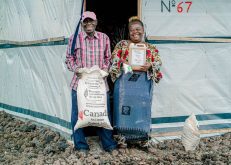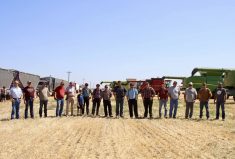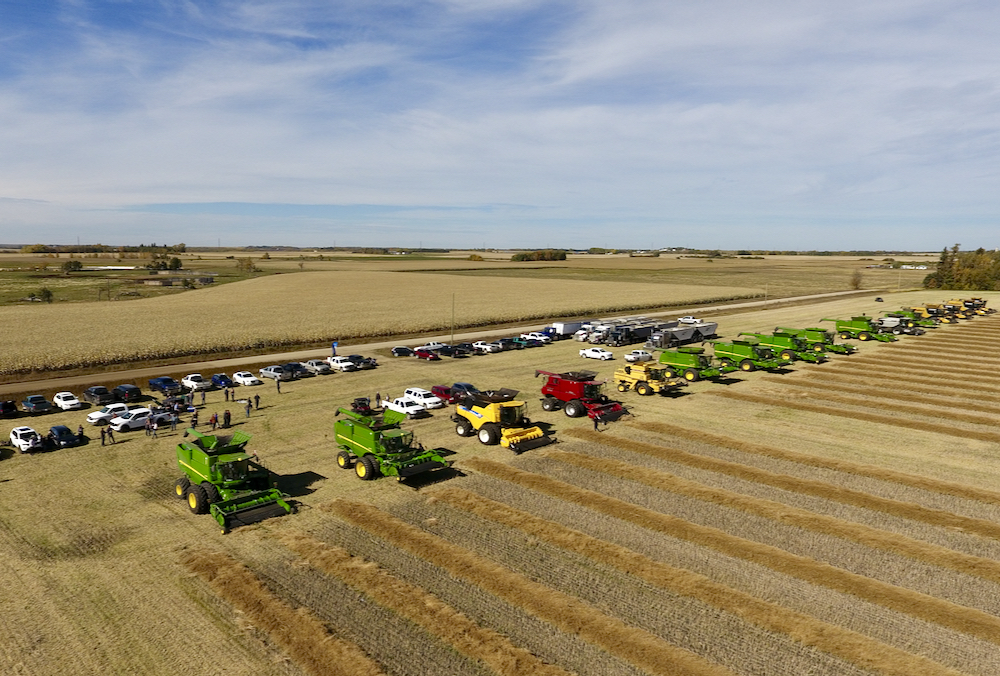Forty years ago, farmers in Western Canada responded to a call to help people who were hungry in the developing world — and the organization that would become the Canadian Foodgrains Bank was born.
The call was issued by Mennonite Central Committee, headquartered in Manitoba and it was farmers from that province and neighbouring Saskatchewan who donated most of the 1,442 tonnes of grain to the newly created MCC Food Bank.
“But it appears that the call for grain got as far as Alberta, with three donations between Oct. 1, 1976 (when the Foodgrains Bank started collecting donations) and Dec. 10, 1976,” said John Longhurst, the organization’s director of resources and public engagement.
Read Also

Farming Smarter receives financial boost from Alberta government for potato research
Farming Smarter near Lethbridge got a boost to its research equipment, thanks to the Alberta government’s increase in funding for research associations.
But who those farmers were isn’t known, he said.
“I don’t know if we could ever find out who those folks were,” said Longhurst.
The first shipment of grain — in sacks — went to India. A few years later, MCC invited other church-related agencies to join it and the Canadian Foodgrains Bank came into being. Today it is a partnership of 15 churches and church agencies supported by farmers, urbanites, businesses, the federal government, and others from coast to coast.
Corny Petkau, 72, was involved in that first collection of grain. He remembers driving from farm to farm in southern Manitoba, sticking his augur into bins, and auguring out bushels of grain.
“I was glad to be a small part of that beginning,” he said. “We knew it was going where it was needed.”
Donating grain was also personal for Petkau, whose father emigrated from Russia in 1926.
“He was helped to get started in his new country, Canada, and he passed along to his children the message that we also needed to do whatever we could to help others.
The grain he collected was taken to a local seed plant owned by brothers Ben and Jake Friesen, where it was cleaned, processed and bagged before being loaded into a boxcar.
“When asked, we were glad to offer our services,” said Ben Friesen. “We were happy to be part of it, never realizing how big it would grow.”
This year, donations (both grain and cash) from Alberta alone topped $2.6 million. That brought the five-year total for this province to $13.7 million. Last year, there were 40 growing projects in Alberta, along with 125 in Ontario, 50 in Manitoba and 31 in Saskatchewan.
Many farmers participate in growing projects for years and even decades. That’s true for both Friesen, 78, and Petkau, who are members of growing projects in southern Manitoba.
“It’s a very worthy cause,” said Petkau. “I’m glad to see it is still going 40 years later. As long as I’m physically able, I intend to support the Foodgrains Bank.”
Foodgrains Bank communications co-ordinator Amanda Thorsteinsson is looking for photos from early growing projects in Alberta. She can be reached at [email protected] or 1-800-665-0377.













